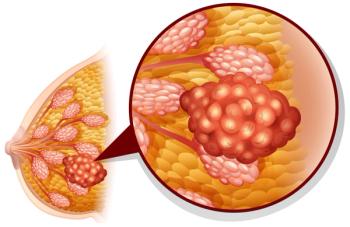
PARP Inhibitor Offers Improved Quality of Life in Advanced Breast Cancer
Treatment with talazoparib improved quality of life vs physician’s choice of chemotherapy in patients with HER2-negative advanced breast cancer.
Treatment with talazoparib was associated with significant improvements as well as delays in time to definitive clinically meaningful deterioration (TTD) on a number of quality of life–related measures when compared with physician’s choice of chemotherapy (PCT) in patients with HER2-negative advanced breast cancer, according to a new analysis from the phase III EMBRACA trial.
The
In this analysis, the authors studied PROs from 431 patients with HER2-negative advanced breast cancer randomized to receive either talazoparib (287 patients) or PCT (144 patients receiving capecitabine, eribulin, gemcitabine, or vinorelbine). PROs were assessed using the European Organisation of Treatment and Research for Cancer (EORTC)
The baseline scores for global health status/quality of life were similar between the arms, at 61.9 for talazoparib and 60.9 for PCT. The talazoparib patients saw a significant improvement in that score of 3.0 points, compared with a significant decline of −5.4 points in the PCT group. The TTD of global health status/quality of life was 24.3 months with the PARP inhibitor, compared with 6.3 months with PCT, for a hazard ratio (HR) of 0.376 (95% CI, 0.26–0.55; P < .0001).
Baseline scores for the five QLQ-C30 functional scales were again similar between the groups. Talazoparib resulted in a significant improvement from baseline with regard to physical functioning and emotional functioning, while PCT resulted in significant worsening in physical functioning, role functioning, cognitive functioning, and social functioning. Talazoparib delayed the TTD in all five of the studied scales.
Specific symptom scales also showed better results with talazoparib. The drug resulted in significant improvements in baseline scores for fatigue, pain, insomnia, appetite loss, and constipation; PCT, meanwhile, resulted in worsening scores for fatigue, pain, and appetite loss. Again, the TTD was better with talazoparib. For example, the median TTD for pain symptoms was not reached with talazoparib, compared with 9.9 months for PCT, for an HR of 0.415 (95% CI, 0.267–0.644; P < .0001).
Similar results were seen for several scales included on the breast cancer–specific QLQ-BR23. This included better results with regard to body image and future perspective, as well as breast and arm symptoms. There were some exceptions, such as a significant deterioration seen in the talazoparib group with regard to sexual enjoyment.
“Our observed extensive positive cancer-related and breast cancer–specific PROs support the concept that the superior efficacy and favorable safety profile of talazoparib translate to better quality of life compared with PCT in locally advanced and metastatic breast cancer patients carrying the germline BRCA1/2 mutation,” the authors concluded.
Newsletter
Stay up to date on recent advances in the multidisciplinary approach to cancer.





















































































